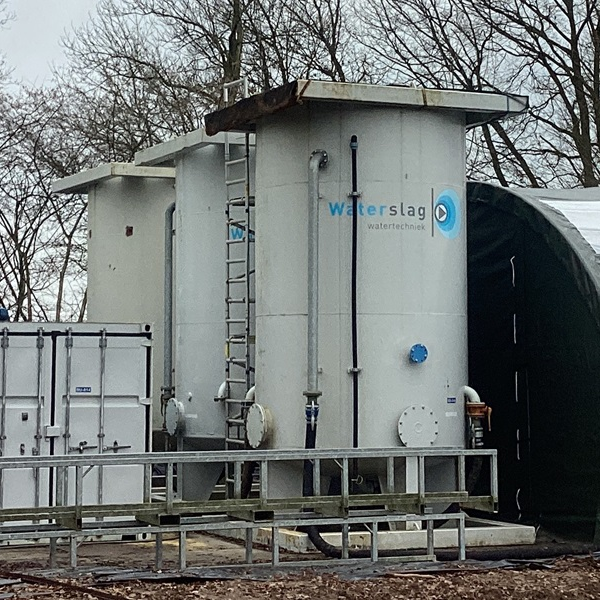Voltastraat – a groundbreaking PFAS project

Voltastraat – a groundbreaking PFAS project
At Voltastraat 86 in Doetinchem, a unique remediation operation is underway. It is one of the first projects involving very high concentrations of PFAS in which contaminated soil is being excavated and highly effective groundwater treatment is taking place on site. Together with TAUW, Witteveen+Bos is carrying out this project as Adviescombinatie Doetinchem (ACD). We are also involved in the removal and possible destruction of PFAS-contaminated clay.
For years, the Voltastraat site functioned as a large-scale storage facility for firefighting foam, which contains hazardous PFAS compounds. Over time, this foam leaked into the ground, significantly contaminating both the soil and groundwater. A remediation operation consisting of two phases was begun to address this contamination. The municipality asked ACD to be involved in the preparation and execution of the first phase.
Specifically, we were tasked with producing technical designs – in particular for the on-site water treatment installation – drafting specifications, supporting the tender process, and supervising works execution. In the first phase, a source-based approach is being employed in which as many kilograms of PFAS as possible are removed from the soil (known as ‘bulk removal’) through wet excavation. The second phase tackles the remaining PFAS in the groundwater.



Wet excavation
The soil excavation is being conducted ‘in the wet’ – in other words, below the groundwater level and without applying dewatering techniques. This results in a pit filled with water up to the natural groundwater level. The excavated, highly PFAS-contaminated soil (mainly clay) gets transported to a recognised processing firm.
Wet excavation was chosen over dry excavation because the latter requires the extraction and treatment of large volumes of groundwater which is then discharged into surface water. This approach was considered too risky in view of the very high PFAS levels in the on-site groundwater and the low regulatory limits for discharging PFAS into surface water.
Brick pilots
Excavated, PFAS-contaminated clay that cannot be cleaned must be disposed of. In light of this fact, the start-up Claybens is exploring whether a method can be found to make clean bricks from PFAS-contaminated clay. In recognition of this promising innovation’s potential, the municipality launched an initial pilot with Claybens in which 24 bricks (equal to 2 buckets of clay) were produced in a laboratory.
The results of this pilot were in turn so encouraging that, in 2024, the Province of Gelderland launched an industrial pilot using clay from the Voltastraat project. 20 tonnes of PFAS-contaminated clay was excavated (equal to about 250 ug/kg PFAS), from which 50,000 usable bricks were to be produced in a factory. The final report on this industrial pilot is currently being prepared.

Water treatment installation
To remove PFAS from the groundwater in the first phase, it is rinsed in a water treatment installation during excavation. The water is then returned for further rinsing. For this process step, Witteveen+Bos created the technical design for the water treatment installation. The installation, which is approximately half the size of a tennis court, consists of separate process steps. Each step has either previously been tested in the field or in a lab, or is already being deployed on a large scale. The first process step involves pretreatment using coagulant dosing and pulverised coal.
This is followed by a flotation step, which removes particles of clay and a great deal of the PFAS. During this process, foam is produced which also contains PFAS. The formation of this foam can be controlled and the foam ‘skimmed’ off. Pretreatment is necessary to protect the carbon filters in the following step. If the water contains too many clay particles, the carbon filters will silt up too quickly, reducing the effectiveness of the treatment. The treated water then goes back to the excavation site, with the residual streams being disposed of together with the contaminated soil. The groundwater at the excavation site is rinsed multiple times until its PFAS levels meet the limits in the specifications.
Process optimisation
Voltastraat is a first-in-class project which gives us the opportunity to gain knowledge and experience in this method of PFAS soil remediation and groundwater treatment. Although the techniques employed on this project are not new, they are being combined in a novel way to remove very high quantities of PFAS.
In this real-world, fully scaled-up project, we are monitoring the performance of individual treatment steps in different excavated sections of the site. These insights can then be used to optimise the process for application on other sites too.

More information?
